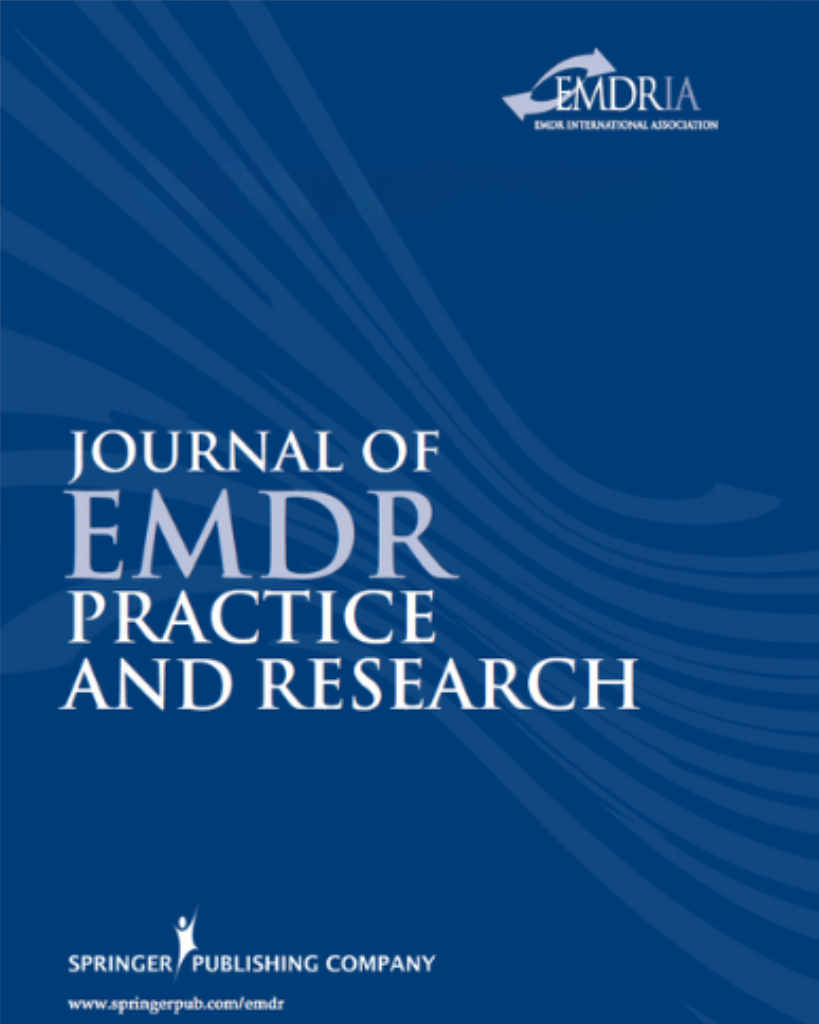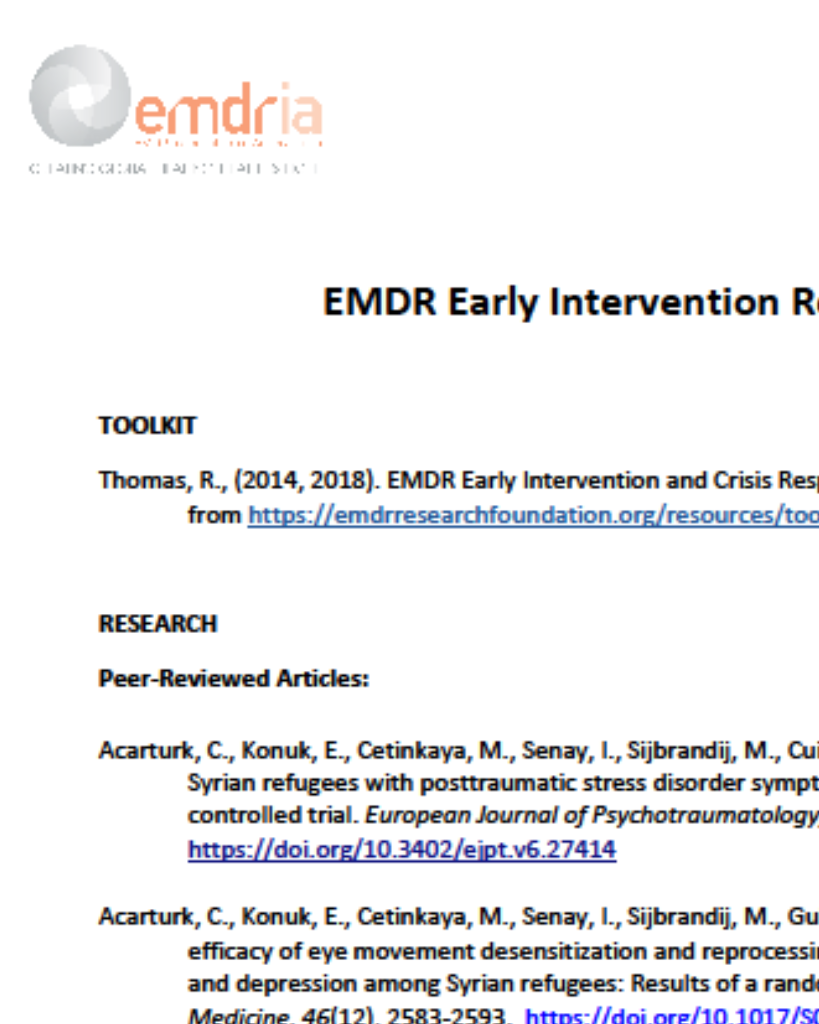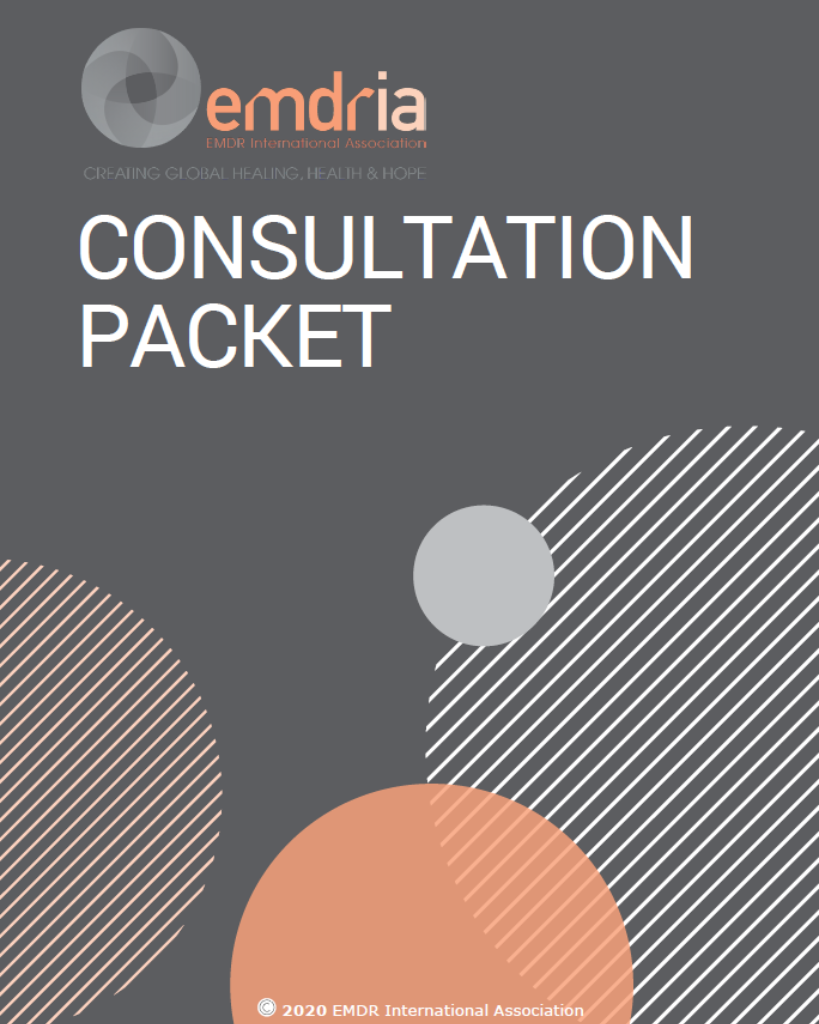EMDR for Childhood PTSD After Road Traffic Accidents: Attentional, Memory, and Attributional Processes
EMDR was used with 11 children who had PTSD after road traffic accidents. After about 2.4 sessions none met criteria for PTSD on assessments.
Article Abstract
“Eye movement desensitization and reprocessing (EMDR) was used with 11 children who developed posttraumatic stress disorder (PTSD) after road traffic accidents. All improved such that none met criteria for PTSD on standardized assessments after an average of only 2.4 sessions. Significant improvements in PTSD, anxiety, and depression were found both immediately after treatment and at follow-up. Attentional, memory, and attributional processes associated with PTSD were assessed and their relationship to therapeutic change examined. Treatment was associated with a significant trauma-specific reduction in attentional bias on the modified Stroop task, with results apparent both immediately after therapy and at follow-up.”
—Description from publisher
Article Access
Open Access
Ribchester, T., Yule, W., & Duncan, A. (2010). EMDR for Childhood PTSD After Road Traffic Accidents: Attentional, Memory, and Attributional Processes. Journal of EMDR Practice and Research, 4(4), 138–147. https://doi.org/10.1891/1933-3196.4.4.138
About the Journal
The Journal of EMDR Practice and Research is a peer-reviewed publication devoted to integrative, state-of-the-art papers about Eye Movement Desensitization and Reprocessing. It is a broadly conceived interdisciplinary journal that stimulates and communicates research and theory about EMDR, and their application to clinical practice. The Journal of EMDR Practice and Research is the Official Publication of the EMDR International Association.
Date
November 1, 2010
Creator(s)
Tracy Ribchester, William Yule, Adam Duncan
Topics
PTSD, Tragedies
Client Population
Adolescents, Children
Extent
10 pages
Publisher
Springer Publishing Company
Rights
Copyright © 2010 EMDR International Association
APA Citation
Ribchester, T., Yule, W., & Duncan, A. (2010). EMDR for Childhood PTSD After Road Traffic Accidents: Attentional, Memory, and Attributional Processes. Journal of EMDR Practice and Research, 4(4), 138–147. https://doi.org/10.1891/1933-3196.4.4.138
Series
4
Installment
4
Audience
EMDR Therapists
Language
English
Content Type
Peer-Reviewed
Original Source
Journal of EMDR Practice and Research
Access Type
Open Access





